Welcome to the beautiful island of Lamu, Kenya, home to a diverse ecosystem of birds. For birdwatchers, Lamu offers a unique and exciting birding experience. From the shoreline to the inland, Lamu is populated by a variety of species of both migratory and resident birds.
From the majestic Great White Pelicans to the small Red-billed Firefinches, the island is teeming with life. Birders can enjoy the beauty of these creatures in their natural habitats, as well as enjoy opportunities for bird photography.
With its tranquil beaches and lush forests, Lamu is the perfect place to explore the wonderful world of birds.
1. Egyptian Goose
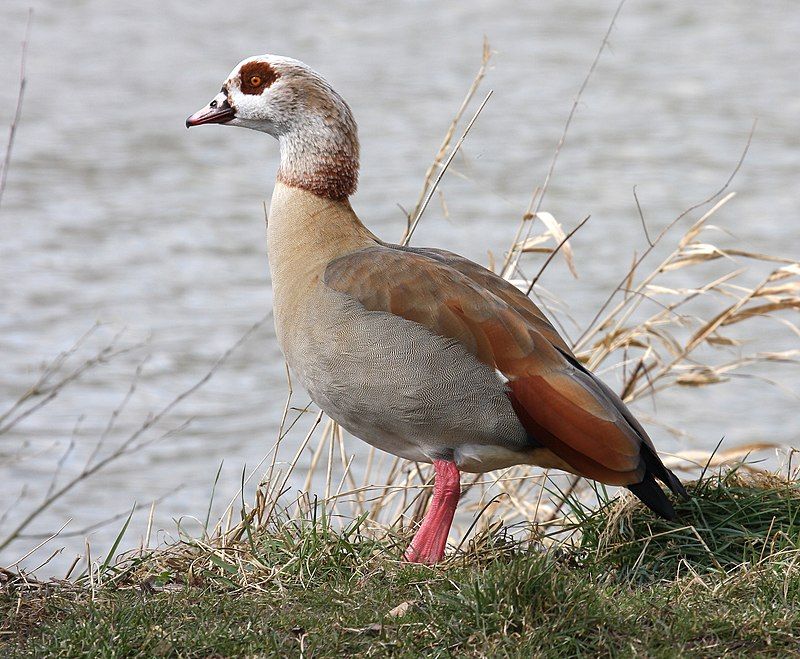
The Egyptian goose is an African bird in the duck family Anatidae. Its popularity has led to its introduction to other parts of the world, including Europe, the United States, and other countries beyond its original range.
This species of goose is prized for its beauty and so is commonly kept as a decorative bird. It is also found in the wild in parts of Africa, where it is appreciated for its graceful movements and attractive feathers.
The breeding habits of the Egyptian goose are interesting – pairs typically form long-term bonds and stay together until one of the birds dies. They nest in tree hollows or other natural cavities, and both parents take turns incubating the eggs.
The young are cared for by both parents until they are able to fly. The diet of the Egyptian goose consists mainly of plant matter, such as grasses, grains, and aquatic vegetation. They also feed on small insects and mollusks.
The Egyptian goose is a hardy species and can thrive in a variety of habitats, from wetlands to dry grasslands. Its numbers have been increasing in recent years, largely due to its introduction to areas outside its natural range.
It is listed as Least Concern by the International Union for Conservation of Nature (IUCN).
| Kingdom | Animalia |
| Phylum | Chordata |
| Class | Aves |
| Order | Anseriformes |
| Family | Anatidae |
| Genus | Alopochen |
| Species | A. aegyptiaca |
2. Emerald-spotted Wood Dove
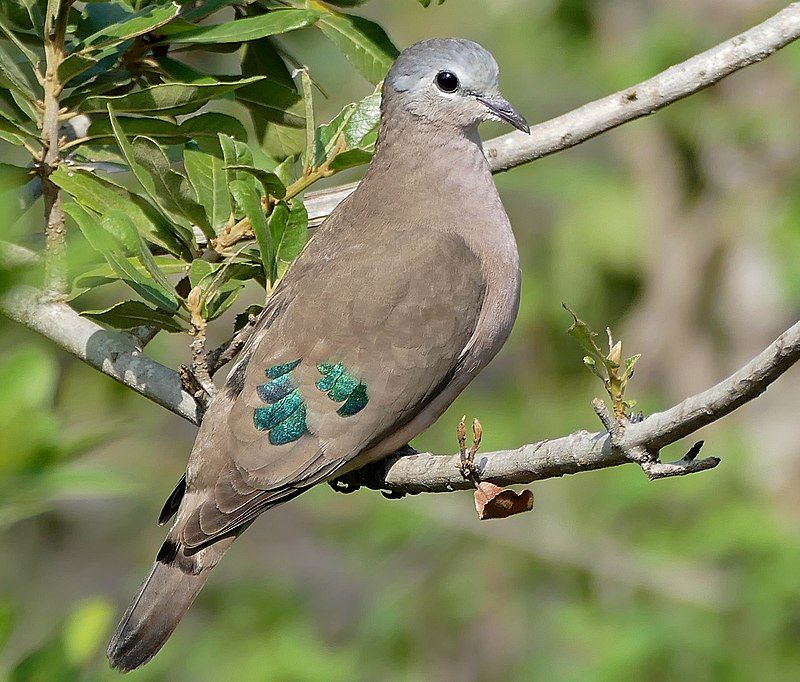
The emerald-spotted wood dove is a species of bird that is found throughout much of eastern and southern Africa. It is a member of the Columbidae family, which includes many species of doves around the world.
This bird prefers to inhabit open, drier deciduous woodlands and second-growth areas. It is not found in evergreen rainforests or semi-desert regions, as these areas do not provide the same resources that the wood dove needs to survive.
The emerald-spotted wood dove is an elegant bird, with a gray or brown body, barred wings, and a black tail. Its most distinctive feature is the emerald spots on its neck and wings. This species of dove feeds mainly on seeds, berries, and other small fruits.
It can often be seen foraging for food on the ground or in low shrubs. The wood dove is a social species, and it can often be seen in pairs or small flocks. It is a vocal bird that produces a soft, cooing call.
Breeding season usually occurs during the summer months, and the female will lay a clutch of two to three eggs in a small, shallow nest. The emerald-spotted wood dove is generally a common species, and it is not currently considered to be at risk of extinction.
However, it is important to protect the habitats of this bird, as these areas are essential for its survival. Conservation efforts must be taken to ensure that this beautiful species of the dove can continue to thrive in the African landscape.
| Kingdom | Animalia |
| Phylum | Chordata |
| Class | Aves |
| Order | Columbiformes |
| Family | Columbidae |
| Genus | Turtur |
| Species | T. chalcospilos |
3. Helmeted Guineafowl
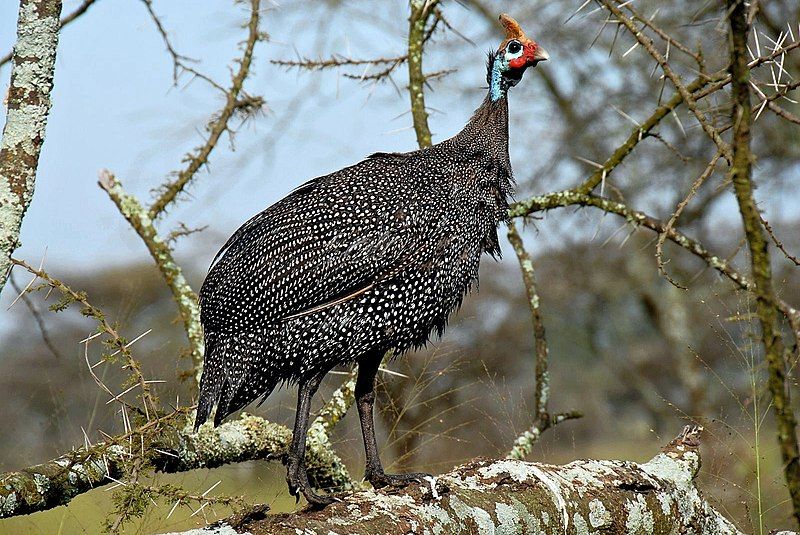
The helmeted guineafowl is a unique species that is native to Africa, mainly south of the Sahara Desert. It is the most recognizable member of the Numididae family of birds and is the only one of its kind in the genus Numida.
This species has been domesticated and introduced to other regions of the world, including the West Indies, North America, Colombia, Brazil, Australia, and Europe. In these areas, the helmeted guineafowl is kept as a pet or for agricultural purposes, such as pest control.
The species is also popular for its meat, which is rich in protein and low in fat. The helmeted guineafowl’s physical characteristics make it easy to identify. It has a dark gray plumage with white spots on its wings and tail.
The bird also has a distinctive helmet-like crest that is reddish-brown in color. Its wattles and beak are yellow, and its eyes are red. The helmeted guineafowl is a medium-sized bird, typically weighing between 1.5 to 2.2 pounds.
It is a social bird that is usually seen in small flocks and is known to be quite vocal. Overall, the helmeted guineafowl is a fascinating bird species that has a wide range of habitats and is now domesticated in many parts of the world.
Its popularity is due to its unique appearance and its versatility as a pet or agricultural helper.
| Kingdom | Animalia |
| Phylum | Chordata |
| Class | Aves |
| Order | Galliformes |
| Family | Numididae |
| Genus | Numida |
| Species | N. meleagris |
4. African Green Pigeon
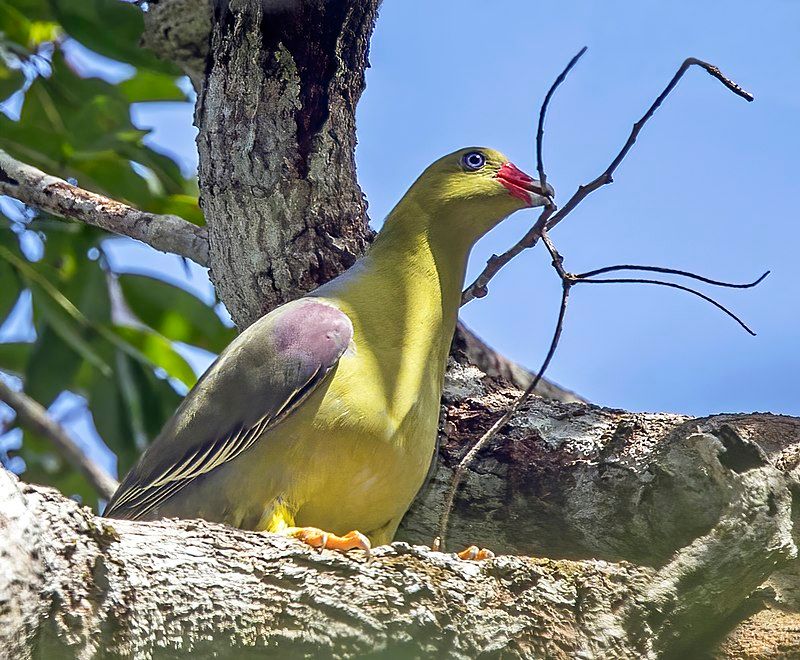
The African green pigeon is a species of bird that belongs to the family Columbidae. This species is one of five green pigeon species that are found in the Afrotropics, which is the region of Africa, Madagascar, and the Arabian peninsula.
The African green pigeon has a wide range in Sub-Saharan Africa, with around 17 recognized races. This species is mainly found in forests, woodlands, and other areas with plenty of trees.
The African green pigeon is known to feed on fruits, buds, and leaves, and they typically nest in holes in trees. This species is usually seen in pairs or small groups, and they are known to use their loud calls to communicate with each other.
The African green pigeon is an important species in the Afrotropics, as they help to disperse seeds and maintain the region’s biodiversity.
| Kingdom | Animalia |
| Phylum | Chordata |
| Class | Aves |
| Order | Columbiformes |
| Family | Columbidae |
| Genus | Treron |
| Species | T. calvus |
5. Yellow-billed Duck
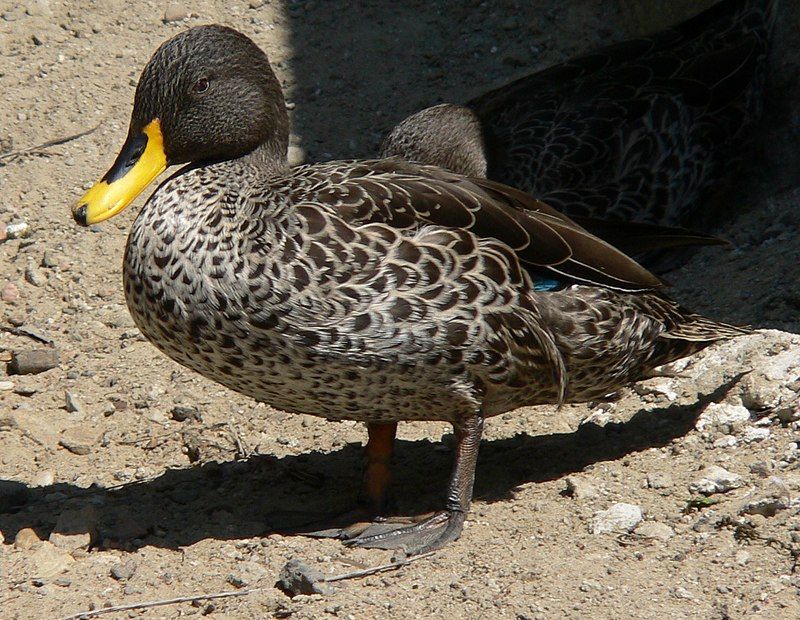
The yellow-billed duck is a medium-sized duck that is found in abundance in southern and eastern Africa. It is 51 to 58 cm long and does not migrate, but rather wanders in the dry season to find suitable waters.
This type of duck is highly sociable, and outside of the breeding season, they form large flocks. This behavior is likely due to their need to find suitable waters and is also beneficial for their safety in numbers.
The yellow-billed duck is an important species for the African ecosystem, as it can help maintain healthy wetlands and provide food for other animals.
| Kingdom | Animalia |
| Phylum | Chordata |
| Class | Aves |
| Order | Anseriformes |
| Family | Anatidae |
| Genus | Anas |
| Species | A. undulata |
6. Spur-winged Goose
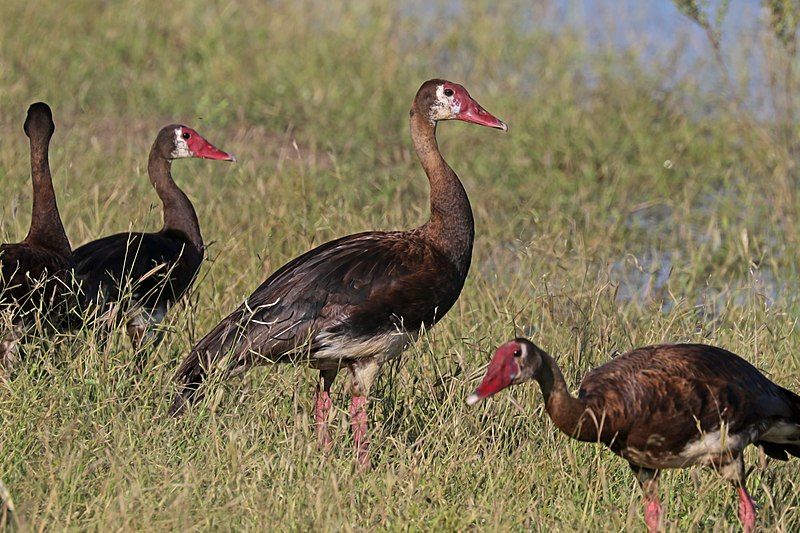
The spur-winged goose is a species of waterbird found in Sub-Saharan Africa, specifically in the family Anatidae. This family includes many other species of birds, such as geese and shelducks.
The spur-winged goose is a large bird, with a wingspan of up to 2 feet and a weight of up to 3.5 pounds. They have a black head, a white body, and a red-orange bill. Their wings are marked by a distinctive spur-shaped notch on the inner primary feathers.
They are omnivorous, feeding on plants, small animals, and insects. They can be found near freshwater lakes, rivers, and marshes, and they are often seen in groups of up to 30 birds.
They are also known to migrate, traveling between wetland and grassland habitats during different seasons. The spur-winged goose is a unique and impressive species, and it plays an important role in its ecosystem.
| Kingdom | Animalia |
| Phylum | Chordata |
| Class | Aves |
| Order | Anseriformes |
| Family | Anatidae |
| Genus | Plectropterus |
| Species | P. gambensis |
7. Red Billed Duck
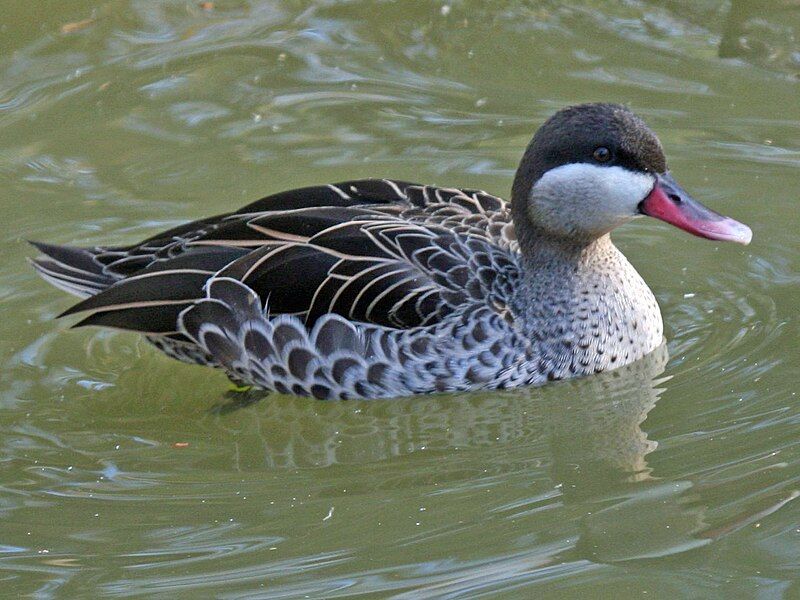
The red-billed teal, or red-billed duck, is a species of dabbling duck native to southern and eastern Africa. It is a resident breeder that is not migratory but will fly far distances to find suitable water sources.
During the breeding season, the red-billed teal is highly gregarious and forms large flocks. This species is abundant south of 10° S, although its exact range may vary depending on environmental conditions.
The red-billed teal is a medium-sized duck, with males growing up to 45 cm in length and weighing between 400 and 600 g. The adult males are predominantly brownish-grey in color, with a red bill and black eye patch.
The females are slightly smaller and duller in color, with a greyish-brown bill and no eye patch. The red-billed teal is highly adaptable and can be found in a variety of habitats, from freshwater marshes and ponds to estuaries and coastal lagoons.
It feeds on aquatic vegetation, seeds, and insects, which it generally finds by dabbling in shallow water. It nests in small colonies, usually near water, and the female typically lays 8-10 eggs. The red-billed teal is an important species for hunters and conservationists alike.
It is a popular game bird, and its large flocks offer great opportunities for recreational hunting. It is also a valuable indicator species, as changes in its population can be used to assess the health of wetlands and other aquatic ecosystems.
| Kingdom | Animalia |
| Phylum | Chordata |
| Class | Aves |
| Order | Anseriformes |
| Family | Anatidae |
| Genus | Anas |
| Species | A. erythrorhyncha |
8. Knob-billed Duck
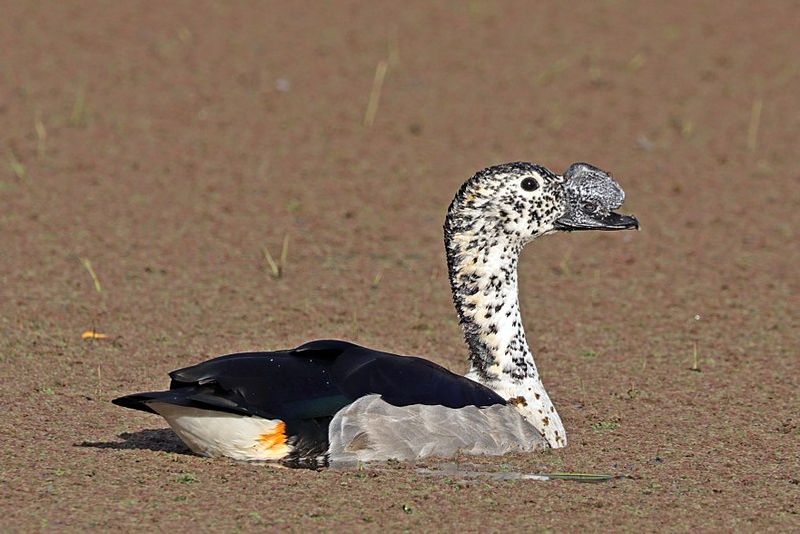
The knob-billed duck, or African comb duck, is a species of duck found in various parts of the world.
This duck is native to the tropical and sub-tropical wetlands and waterways of Sub-Saharan Africa and the island of Madagascar, as well as most of South Asia and mainland Indochina.
This species of duck is easily recognized by its large, bulbous bill, which is the source of its name. The knob-billed duck is a medium-sized duck, reaching an average length of around 53 cm (21 in).
It has a short bill and a dark-brown body, with males having a white head and neck and females having a light-brown head and neck. Its wings are blackish-brown, with white spots. The knob-billed duck is a relatively common species, found mostly in wetland habitats.
It prefers shallow, freshwater wetlands, such as marshes, swamps, and flooded meadows.
It feeds mainly on aquatic vegetation and insects, as well as small fish and invertebrates. When it comes to taxonomy, most authorities classify the knob-billed duck and the comb duck separately. The comb duck is a species of duck found mostly in tropical South America.
It is distinguished from the knob-billed duck by its larger size, darker coloration, and different bill shape.
| Kingdom | Animalia |
| Phylum | Chordata |
| Class | Aves |
| Order | Anseriformes |
| Family | Anatidae |
| Genus | Sarkidiornis |
| Species | S. melanotos |
9. Greater Flamingo
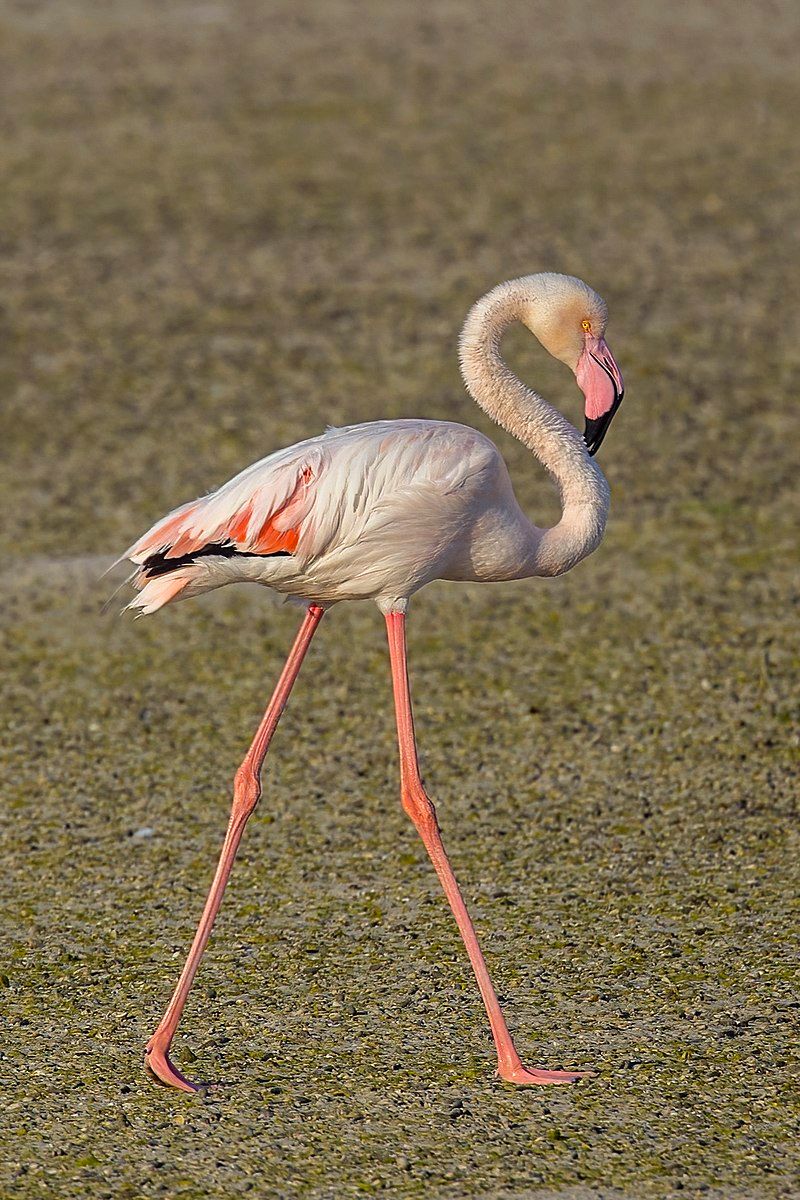
The greater flamingo is the most common and largest species of flamingo in the world.
It is found in many parts of the Old World, including Northern and Sub-Saharan Africa, the Indian Subcontinent, the Middle East, the Levant, the Persian Gulf, the Gulf of Aden, the Red Sea, and the Mediterranean countries of Southern Europe.
These birds are often seen in large flocks, gathering in wetlands and shallow lakes to feed. They have long, curving necks and long legs that they use to wade through shallow water.
These birds are known for their beautiful pink feathers, which are the result of their diet of brine shrimp and other crustaceans.
The greater flamingo is an important species for conservation, as it is considered a species of Least Concern by the International Union for Conservation of Nature.
| Kingdom | Animalia |
| Phylum | Chordata |
| Class | Aves |
| Order | Phoenicopteriformes |
| Family | Phoenicopteridae |
| Genus | Phoenicopterus |
| Species | P. roseus |
10. Black-winged Stilt
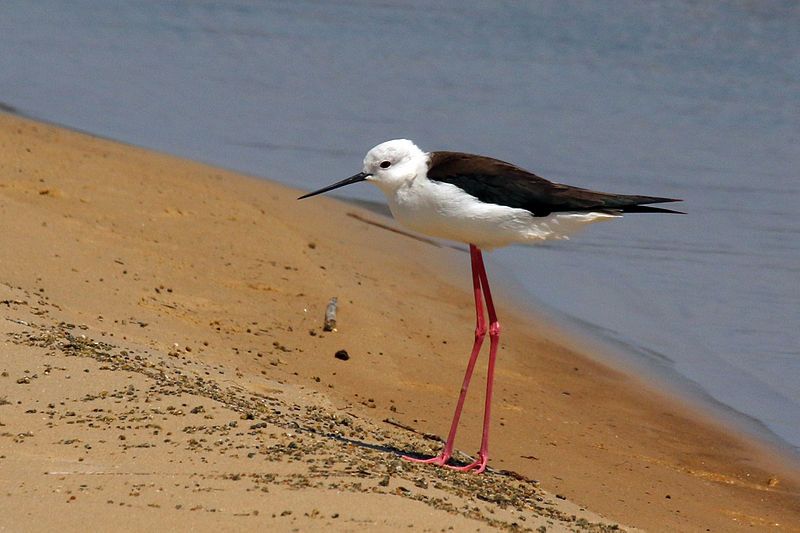
The black-winged stilt is a species of wader, a type of bird that wades in shallow water to search for food. It is part of the avocet and stilt family and is found in many regions around the world.
It is easily identified by its long legs, which are important for wading in water in search of prey. Its scientific name is H. himantopus, and it is considered to be a single species, despite its wide global distribution.
This species has adapted to many different habitats, which allows it to thrive in many areas. It is considered to be quite resilient and has been able to survive in a variety of environments.
Its cosmopolitan nature, combined with its long legs, make it a unique bird and a valuable part of the avocet and stilt family.
| Kingdom | Animalia |
| Phylum | Chordata |
| Class | Aves |
| Order | Charadriiformes |
| Family | Recurvirostridae |
| Genus | Himantopus |
| Species | H. himantopus |
11. Blue-billed Teal
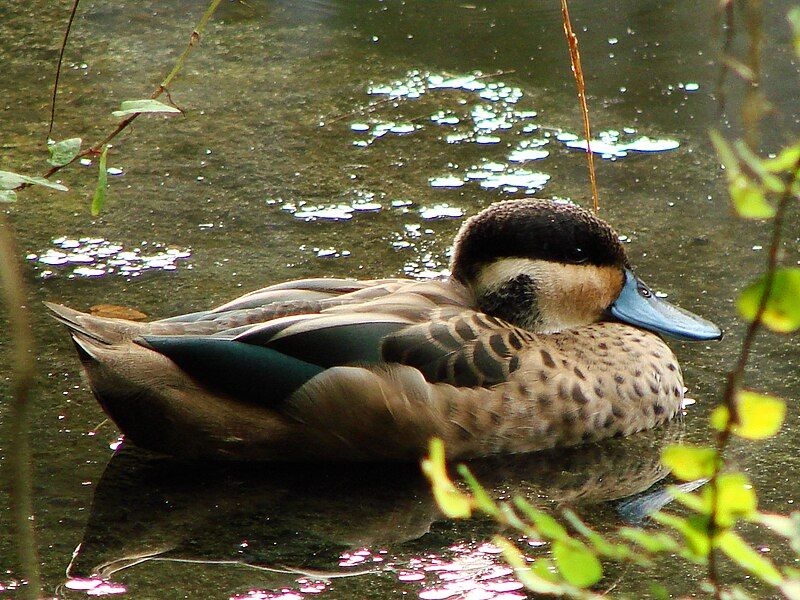
The blue-billed teal, also known as the spotted teal or Hottentot teal, is a species of dabbling duck that is found in eastern and southern Africa. This species of duck is migratory and can be seen in countries such as Sudan, Ethiopia, Niger, Nigeria, South Africa, and Namibia.
In the western part of Africa and in Madagascar, the blue-billed teal is usually a sedentary species, meaning it does not migrate. The blue-billed teal is a relatively small duck, measuring in at about 20 inches long with a wingspan of about 25 inches.
Its striking plumage is composed of a blue bill, white face, and light brown body with black-speckled wings.
It is usually found living in shallow freshwater wetlands, such as marshes and ponds, and will often feed on small invertebrates and vegetation. The blue-billed teal is an important species for both local and international waterfowl hunters.
This species is also an important food source for many people living in the countries where it is found. Despite its popularity, the blue-billed teal is listed as a vulnerable species due to threats such as habitat degradation, hunting pressure, and pollution.
Conservation efforts are in place to help protect this species and its habitats.
| Kingdom | Animalia |
| Phylum | Chordata |
| Class | Aves |
| Order | Anseriformes |
| Family | Anatidae |
| Genus | Spatula |
| Species | S. hottentota |
12. White-backed Duck
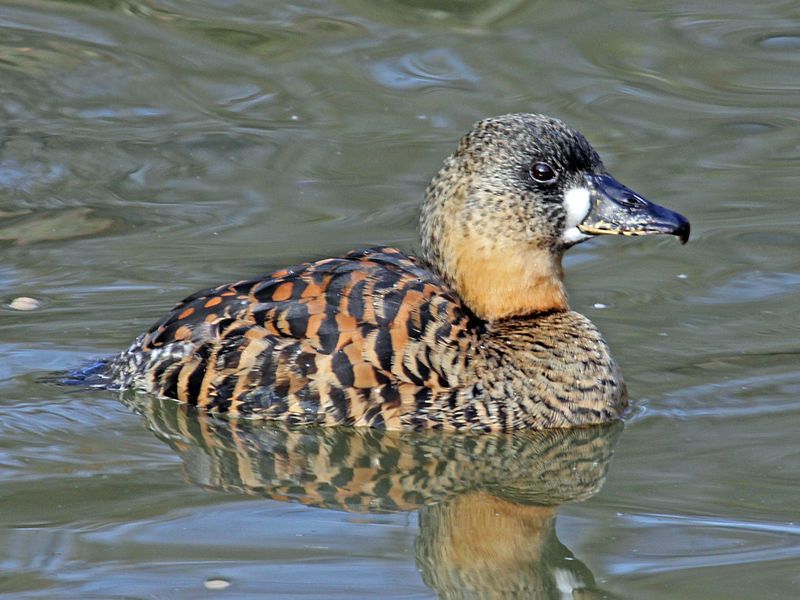
The white-backed duck is a species of waterbird belonging to the family Anatidae, which also includes ducks, geese, and swans. It is the only member of the genus Thalassornis and is distinct from other ducks in many ways.
However, it shares some similarities with the whistling ducks in the subfamily Dendrocygninae, and the stiff-tailed ducks in the subfamily Oxyurinae, making them its closest relatives.
The white-backed duck has white feathers on its back, a long neck, and a relatively short tail. Its bill is long and slightly decurved, while its legs and feet are orange-red.
It is a strong and agile flyer and prefers to forage on the surface of the water in shallow ponds, lakes, and marshes. It feeds mainly on small aquatic invertebrates and plant material, although it will also take the occasional fish or earthworm.
The white-backed duck is a generally solitary bird, although it may form small flocks outside of the breeding season. In the breeding season, it will form pairs and raise its young in secluded locations near water.
It is a vocal species, producing a variety of quacks, whistles, and honks.
| Kingdom | Animalia |
| Phylum | Chordata |
| Class | Aves |
| Order | Anseriformes |
| Family | Anatidae |
| Genus | Thalassornis |
| Species | T. leuconotus |
13. African Pygmy Goose
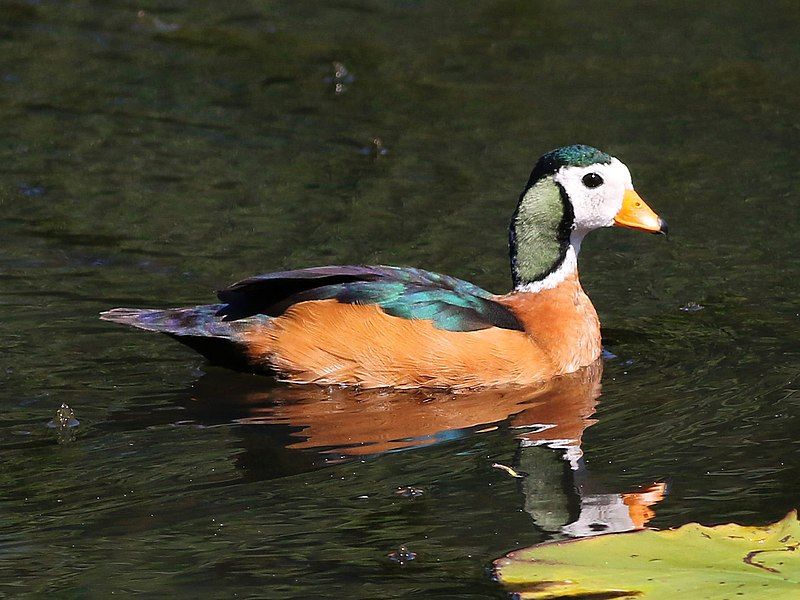
The African Pygmy Goose is a species of waterfowl that is native to sub-Saharan Africa. It is an incredibly small waterfowl and is one of the smallest species of waterfowl in the world.
Despite its small size, the African Pygmy Goose has a beak and a body shape that is very similar to that of geese. However, the African Pygmy Goose is actually more closely related to the dabbling ducks and other species of waterfowl that are commonly referred to as “ducks”.
This is in contrast to true geese, which are from a different family of waterfowl. The African Pygmy Goose is an interesting species that bridges the gap between two different families of waterfowl.
| Kingdom | Animalia |
| Phylum | Chordata |
| Class | Aves |
| Order | Anseriformes |
| Family | Anatidae |
| Genus | Nettapus |
| Species | N. auritus |
14. Blue Quail
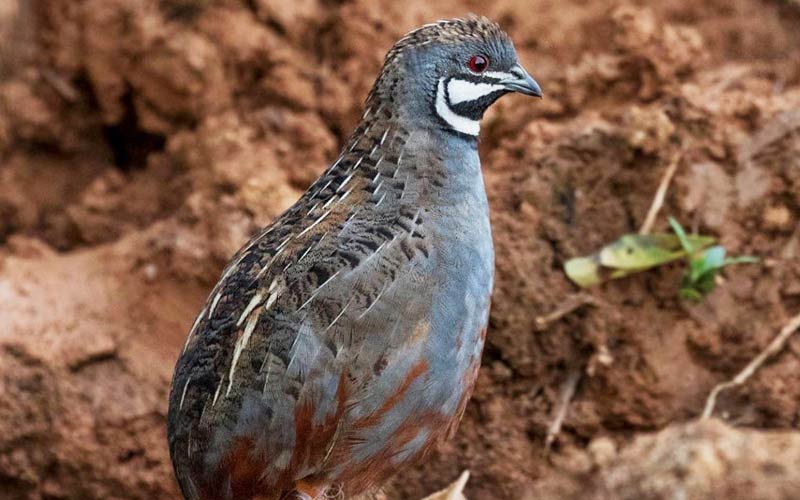
Source: ebird.org
The blue quail, or African blue quail, is an intriguing species of bird found in sub-Saharan Africa. It is part of the Phasianidae family, which includes other gamebirds such as partridges, pheasants, and guineafowl.
This species of quail is mainly found in grasslands and savannahs, though they may also inhabit areas of scrub and open woodlands. The African blue quail is a small bird, typically measuring around 8 inches in length.
Its plumage is mainly a vibrant blue, with white and black markings on its wings, back, and head. They may also feature some reddish-brown feathers on their throat and breast.
The males of the species are usually more colorful than the females. The African blue quail is a ground-dwelling bird, that prefers to feed on insects, seeds, and small invertebrates. When disturbed, they tend to fly short distances and quickly dive back into the undergrowth.
They usually form small flocks and can be seen foraging in open fields. The African blue quail is a unique species of bird and one that is worth taking the time to observe in its natural habitat.
Its vibrant coloring and interesting behavior make it an interesting and rewarding species to observe.
| Kingdom | Animalia |
| Phylum | Chordata |
| Class | Aves |
| Order | Galliformes |
| Family | Phasianidae |
| Genus | Synoicus |
| Species | S. adansonii |
15. Greater Painted-snipe
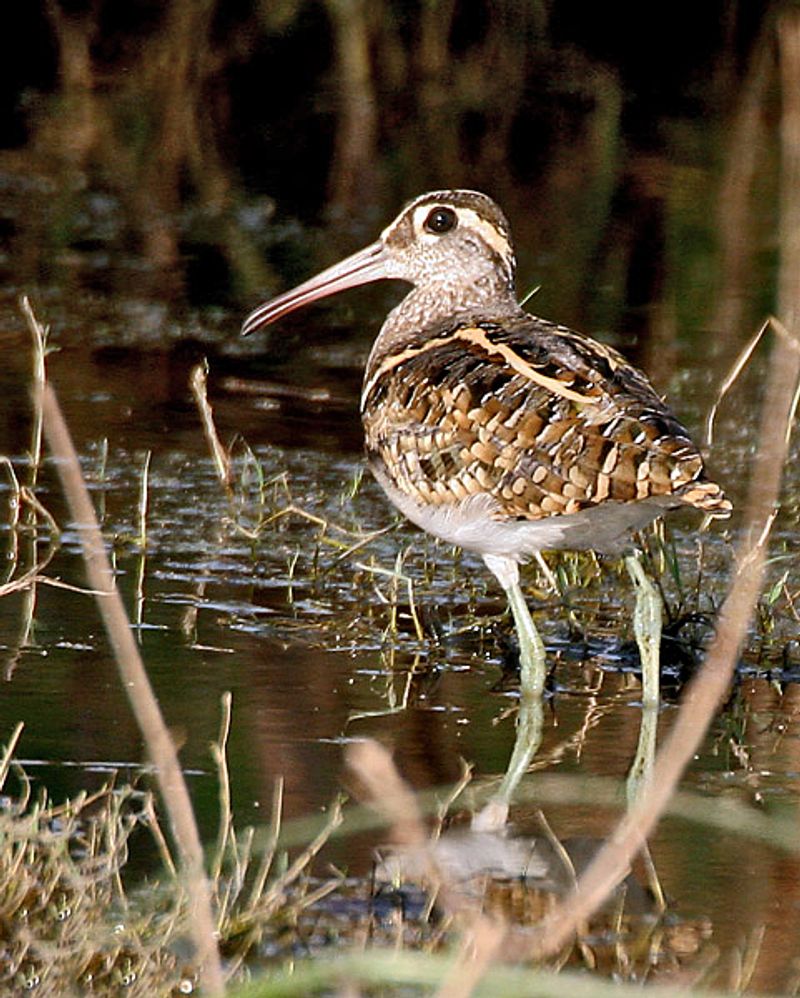
The greater painted snipe is a bird belonging to the family Rostratulidae, a family of waders. This species of bird is found in a variety of marshy habitats across Africa, South Asia, and Southeast Asia.
The greater painted-snipe is a medium-sized bird, with a wingspan of between 38 and 44 centimetres. It has a distinctive plumage, characterized by brown and black mottled feathers with white spots on the wings and back.
The bill is long and slightly curved, and the legs are long and thin. The greater painted-snipe feeds mainly on small invertebrates, such as aquatic insect larvae, crustaceans, and molluscs.
During the breeding season, they will also consume plant material, such as seeds and grasses. The greater painted snipe is a solitary bird, and pairs will only form during the breeding season. The female will lay two to four eggs in a nest built in marshy vegetation.
Both parents will take part in incubating the eggs and raising the young. The greater painted snipe is vulnerable to habitat destruction, especially in areas where wetlands are being drained or converted for other purposes.
If their habitat is not properly conserved, the population of this species could be at risk. It is therefore important that wetland habitats are protected so that this species can continue to thrive.
| Kingdom | Animalia |
| Phylum | Chordata |
| Class | Aves |
| Order | Charadriiformes |
| Family | Rostratulidae |
| Genus | Rostratula |
| Species | R. benghalensis |
16. Black-tailed Godwit
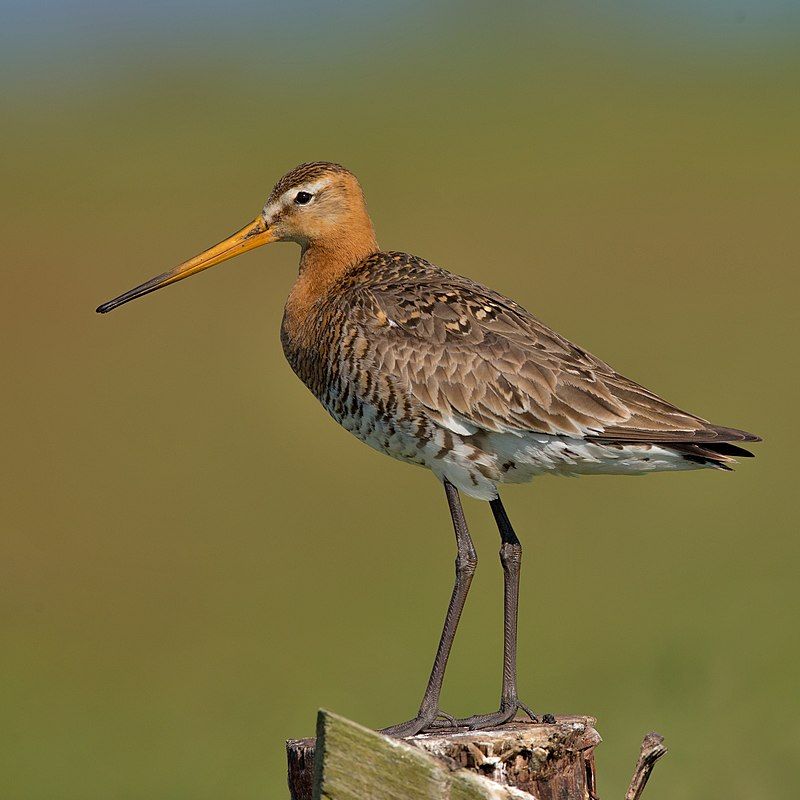
The black-tailed godwit is a species of large shorebird with a long, slender bill and long legs. It was first described by the famous Swedish naturalist Carl Linnaeus in 1758 and is a member of the genus Limosa, which includes all other species of godwits.
The black-tailed godwit has a wide distribution, occurring across much of Europe, Asia, and Australia, along with some parts of North America.
It is a highly migratory species, with some populations traveling thousands of miles to reach their wintering grounds. The black-tailed godwit is a medium-sized shorebird, typically measuring between 40 and 45 cm in length.
The plumage is generally a mottled brown, with a distinctive white rump and tail. The long bill is black, while the legs are typically a dull greenish-grey. The black-tailed godwit feeds mainly on invertebrates, which it extracts from the mudflats and shallow water it frequents.
During the breeding season, it will also take some plant matter, such as seeds. The black-tailed godwit is an important species for conservation, as its population numbers have been declining in recent years due to a variety of factors, including loss of habitat, pollution, and human disturbance.
As a result, it is listed as vulnerable on the IUCN Red List. Conservation efforts are underway to help protect this species and its habitat, including habitat restoration and protection, as well as monitoring of population numbers.
| Kingdom | Animalia |
| Phylum | Chordata |
| Class | Aves |
| Order | Charadriiformes |
| Family | Scolopacidae |
| Genus | Limosa |
| Species | L. limosa |
17. Whimbrel
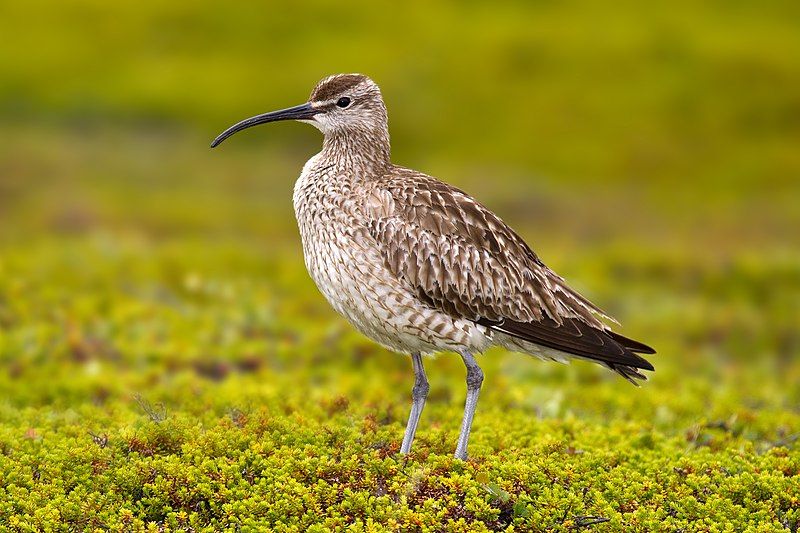
The Eurasian or common whimbrel is a type of wader, which belongs to the large family Scolopacidae. It is the most widespread of the curlews and is found breeding in many regions of subarctic Asia and Europe, as far south as Scotland.
Its name, “white-rumped whimbrel,” is used in North America to distinguish it from other types of birds in the same family. The Eurasian Whimbrel is a medium-sized bird, typically with a brown back, grey wings, and a white belly.
It has a short, curved bill and a grey neck with a white stripe that runs down the side. The most distinguishing feature of the Eurasian whimbrel is its white rump, located at the base of its tail.
This white rump stands out against its dark feathers and is a key identifier of the species. The Eurasian whimbrel breeds across a large range, from Siberia to Scotland. It prefers to inhabit wetlands, coastal grasslands, and marshes, where it can find plenty of food.
It feeds on a variety of aquatic invertebrates, small mammals, and seeds.
During the winter months, the Eurasian whimbrel migrates southwards to areas with milder temperatures and better food sources. The Eurasian Whimbrel is a relatively common bird, and its populations are stable across most of its range.
However, it is threatened by habitat loss and degradation, as well as hunting and poaching. As a result, conservation efforts are necessary to ensure that the Eurasian whimbrel can continue to thrive in its natural habitat.
| Kingdom | Animalia |
| Phylum | Chordata |
| Class | Aves |
| Order | Charadriiformes |
| Family | Scolopacidae |
| Genus | Numenius |
| Species | N. phaeopus |
Conclusion
Birds play an important role in Lamu’s ecology and culture. They provide food for predators and humans alike, and their presence is integral to the island’s unique biodiversity.
Additionally, they are revered in many of the local traditions and are integral to the spiritual lives of the people of Lamu. All in all, the birds of Lamu are a vital part of the island’s rich history and culture.